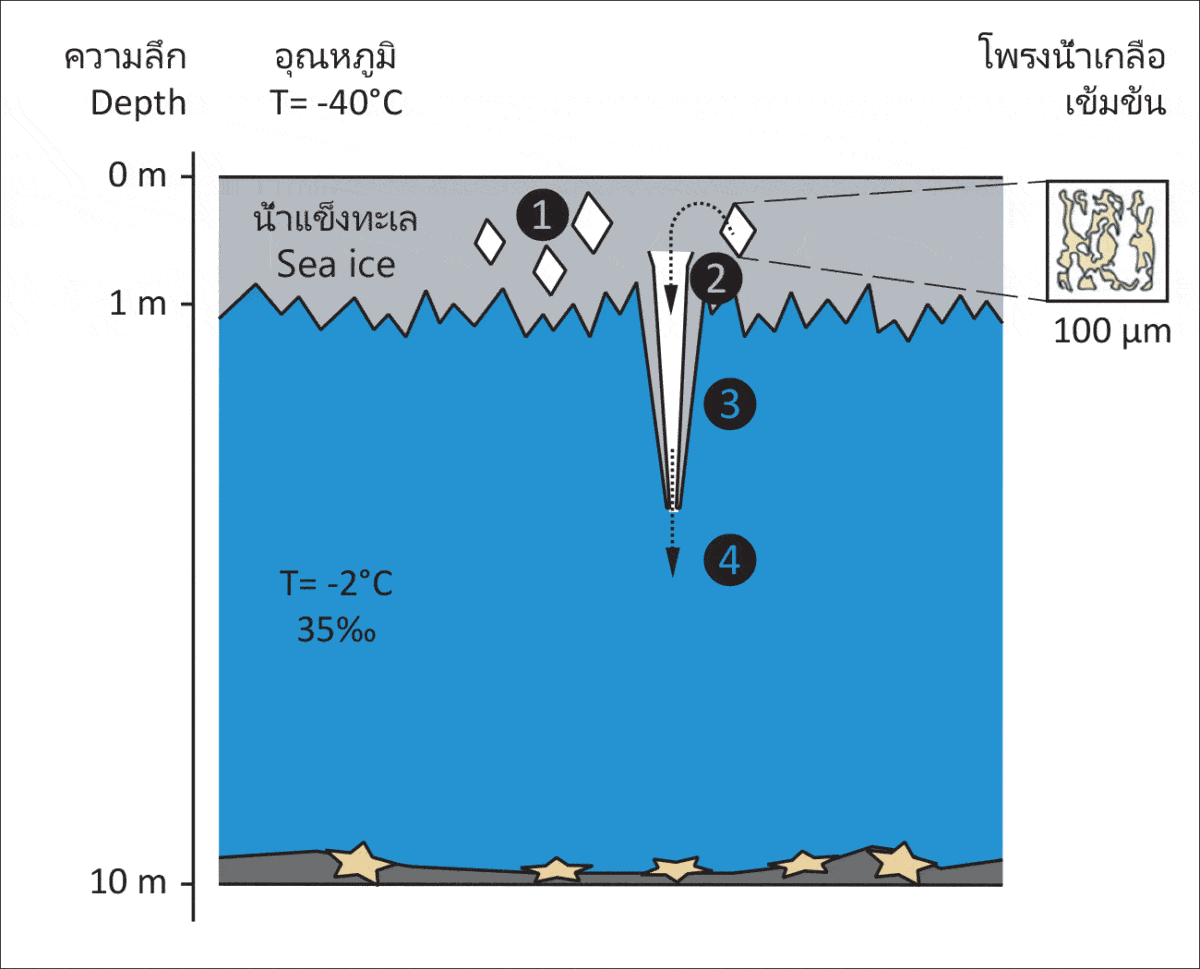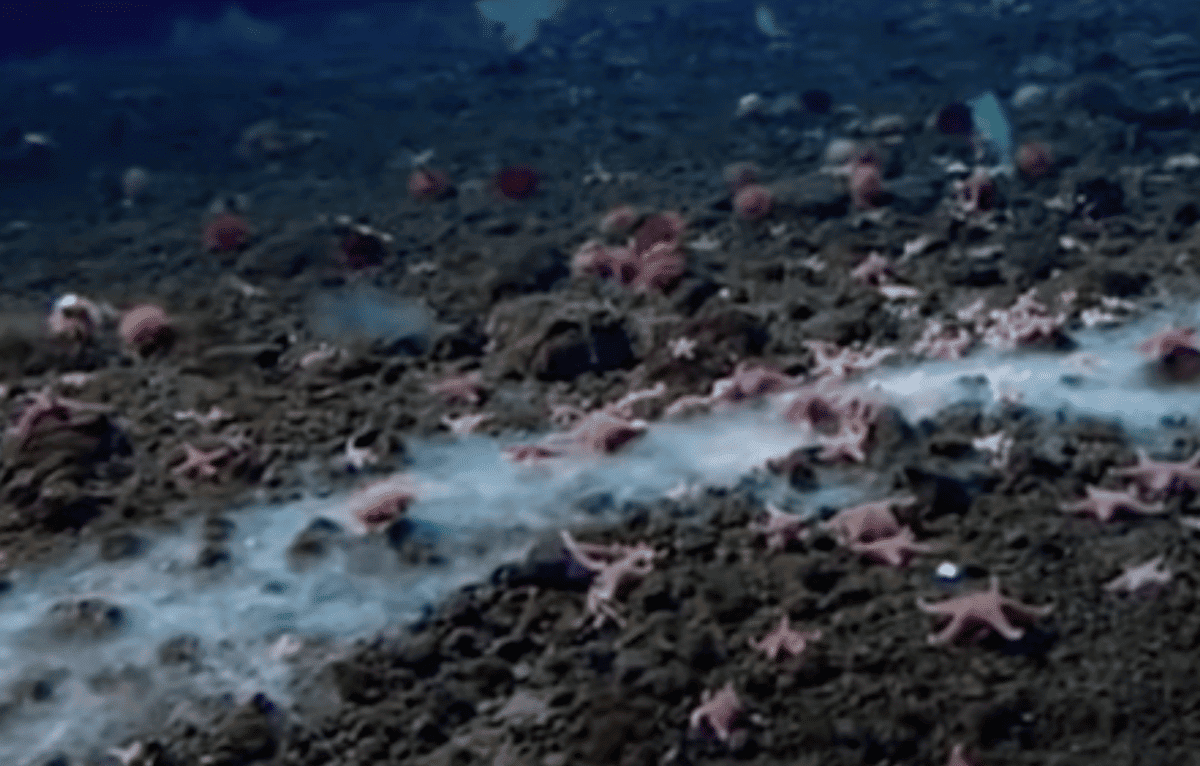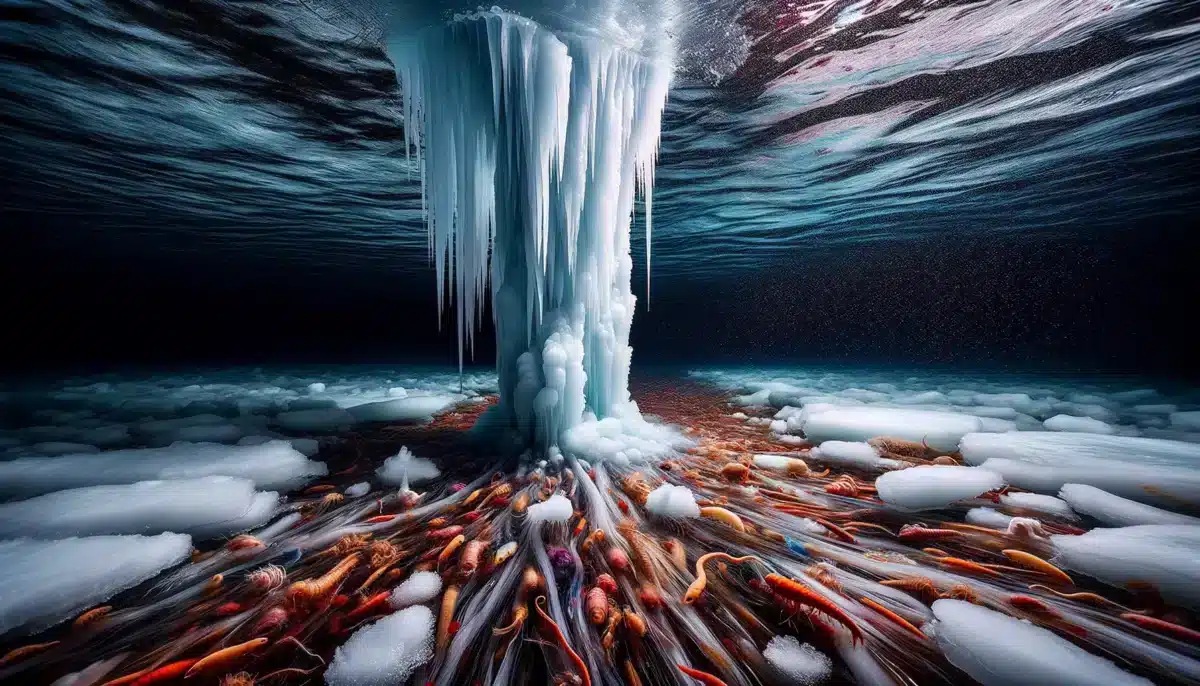In the icy waters of the polar regions, a breathtaking event occurs. This is where polar stalactites, also known as “brinicles” or ice fingers of death, form. These icy formations grow downwards towards the sea floor, creating a mesmerizing and deadly spectacle. A recent video captures this phenomenon in action, showing how it freezes everything in its path.
The Birth of Ice Fingers
Polar stalactites start at the surface. When salty sea ice forms, it expels salt, making the surrounding water denser and colder.
This super-chilled brine sinks, and as it does, it freezes the fresher water around it.
This creates a descending tube of ice, or brinicle, reaching towards the ocean floor.
Marine Ecosystems Under Siege
As a brinicle descends, it threatens the seafloor’s inhabitants. Creatures like starfish and sea urchins, unable to move quickly, find themselves in a deadly race.
If overtaken, they’re encased in ice, frozen in place. This event reshapes the ecosystem, selecting for faster or more fortunate creatures.
A Frozen Impact on Sea Life

The immediate area around a brinicle becomes a no-go zone for most marine life. However, some species thrive.
Certain fish and invertebrates have adapted to the cold, finding shelter and food around these icy structures.
This shows nature’s resilience and adaptability in the face of harsh conditions.
The Role of Polar Stalactites in the Food Web
Brinicles influence the polar food web. By freezing some creatures, they indirectly provide a source of food for others.
Scavengers and predators take advantage of these frozen feasts. This cyclic interaction demonstrates the complexity and interconnectedness of marine ecosystems.
Scientific Significance and Study

Researchers are fascinated by brinicles. They study these natural phenomena to understand their formation, growth, and impact on marine environments.
This knowledge helps scientists predict how changing climates might affect polar regions and their delicate ecosystems.
Conclusion
The video of the finger of death under the sea reveals nature’s beauty and brutality. It shows a world where ice sculptures grow and life hangs in the balance.
Polar stalactites, with their mesmerizing growth and lethal touch, remind us of our planet’s ecosystems’ dynamic and ever-changing nature.
Through understanding these icy phenomena, we gain insight into the resilience of life and the importance of protecting our fragile marine environments.
To Read more stories like this, check out the articles below:
- Surprising Behaviors of Whale Calves: Milk Thieves of the Ocean
- Five Fascinating Species Thriving at the Ocean’s Bottom
- Penguin Colony Found On A Lone Ice Berg In The Middle Of The Ocean
Join our Forum for free today!

- Brown Bear Approaches And Wiggles His Foot - July 22, 2024
- Mountain Biker Has An Extremely Close-up Encounter With a Wild Giraffe - July 22, 2024
- Eagle Flies Into a Moving Car - July 21, 2024

